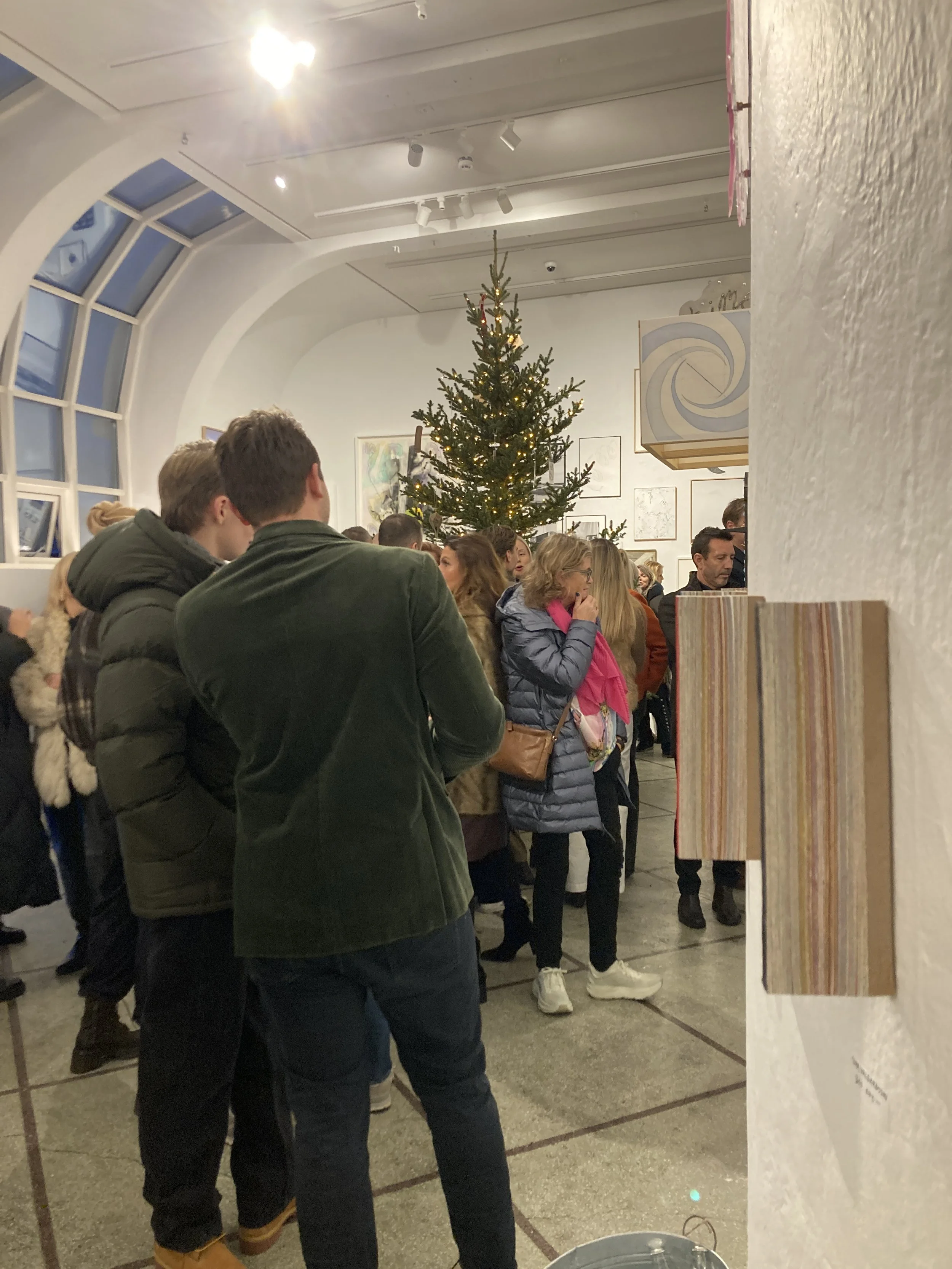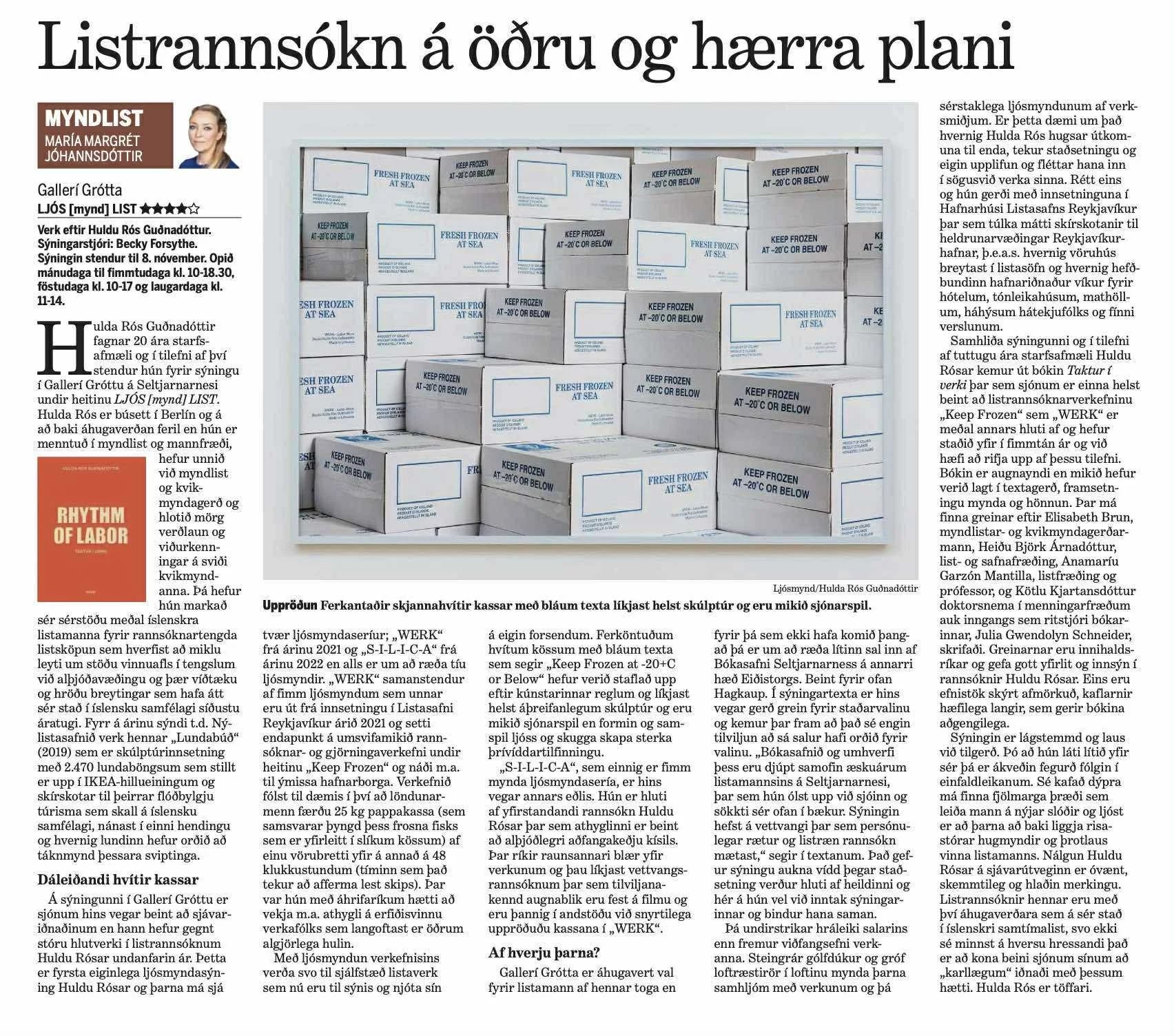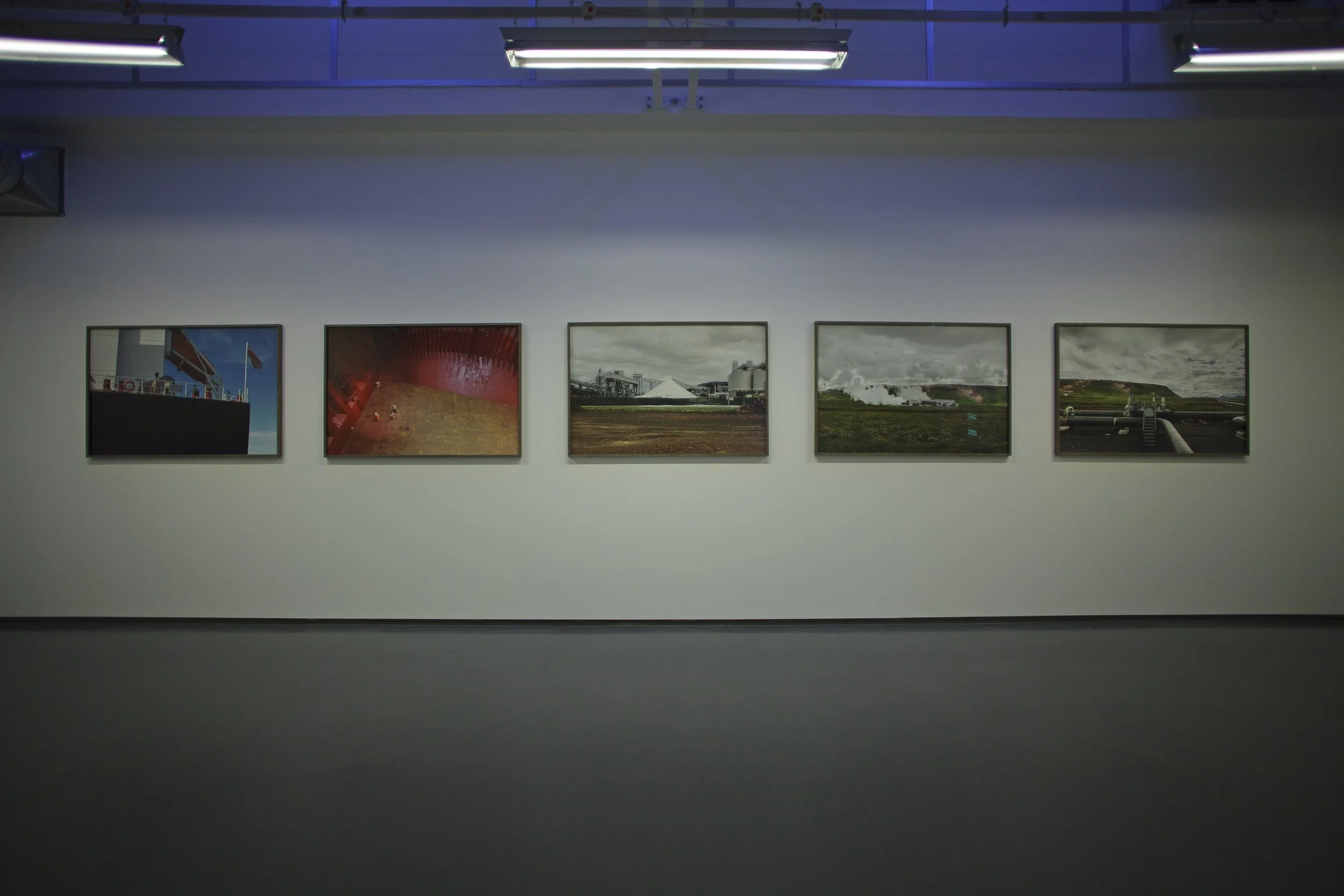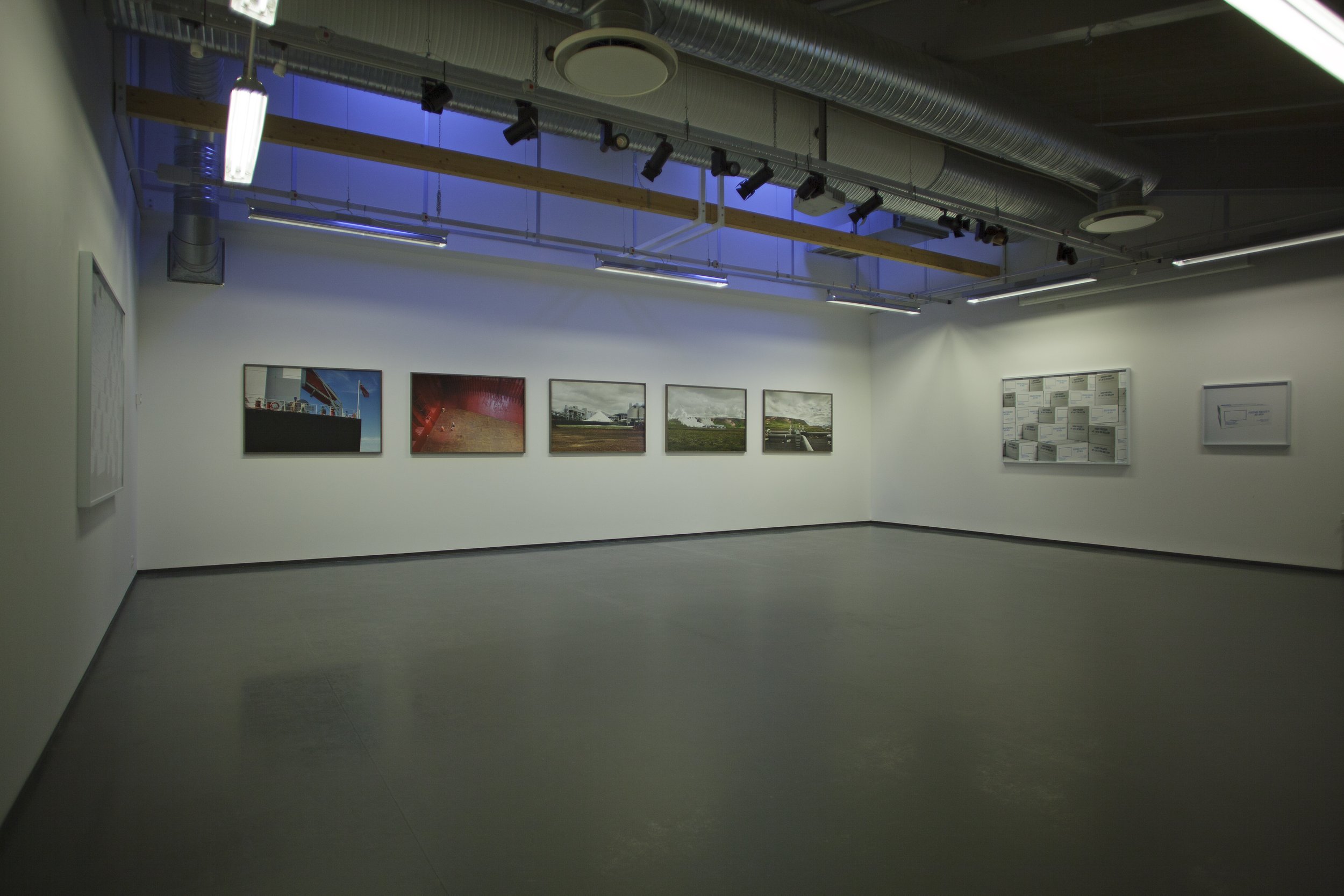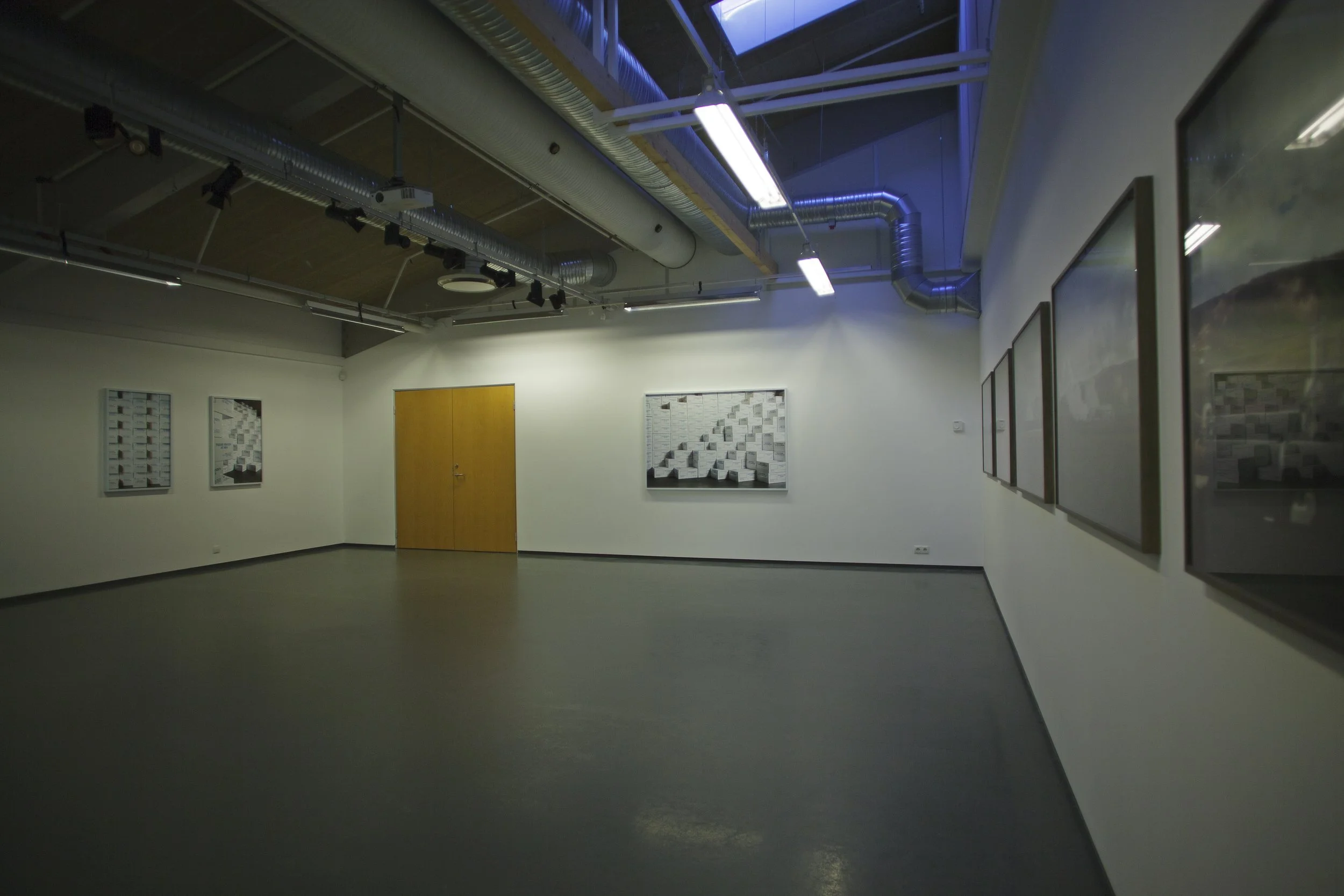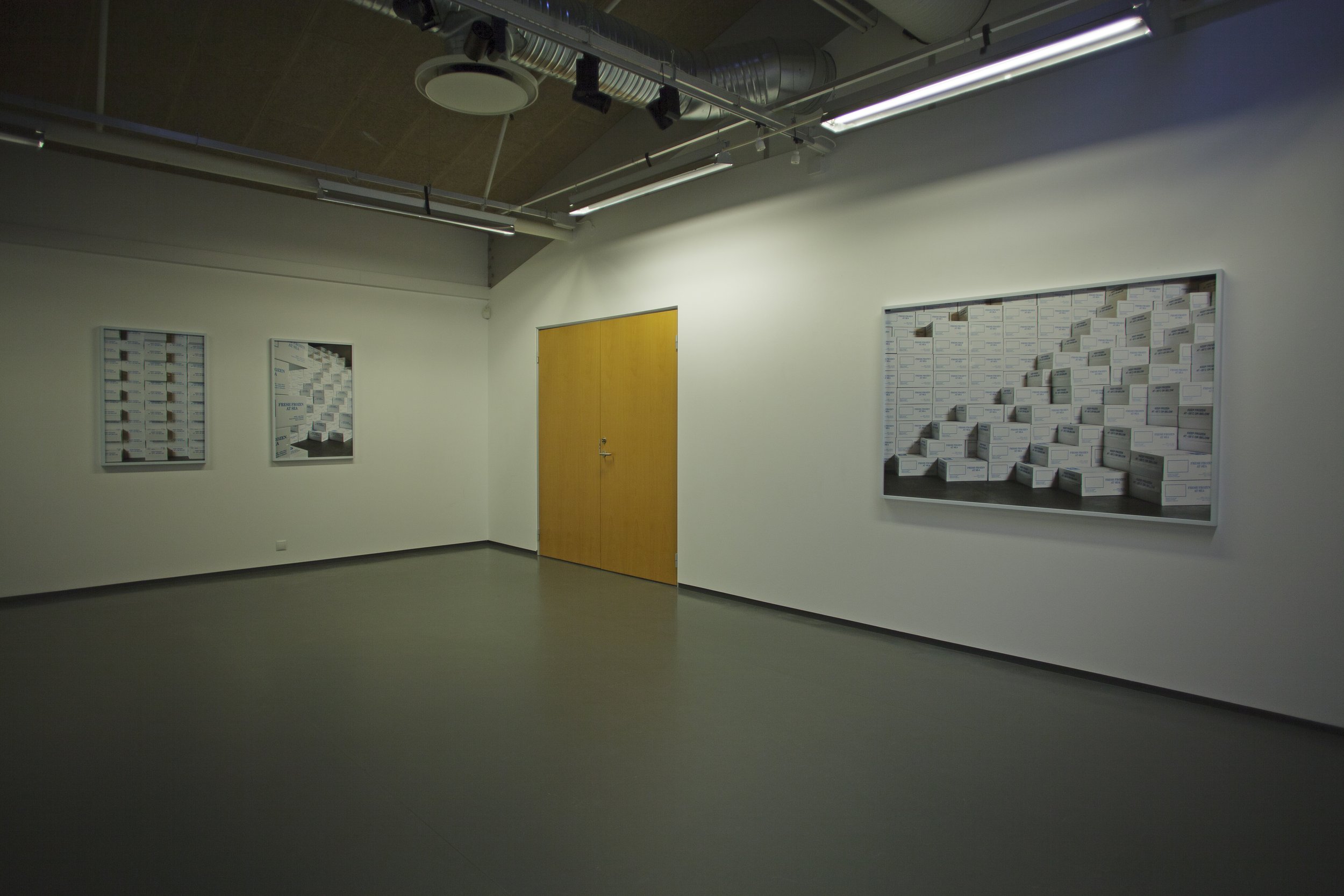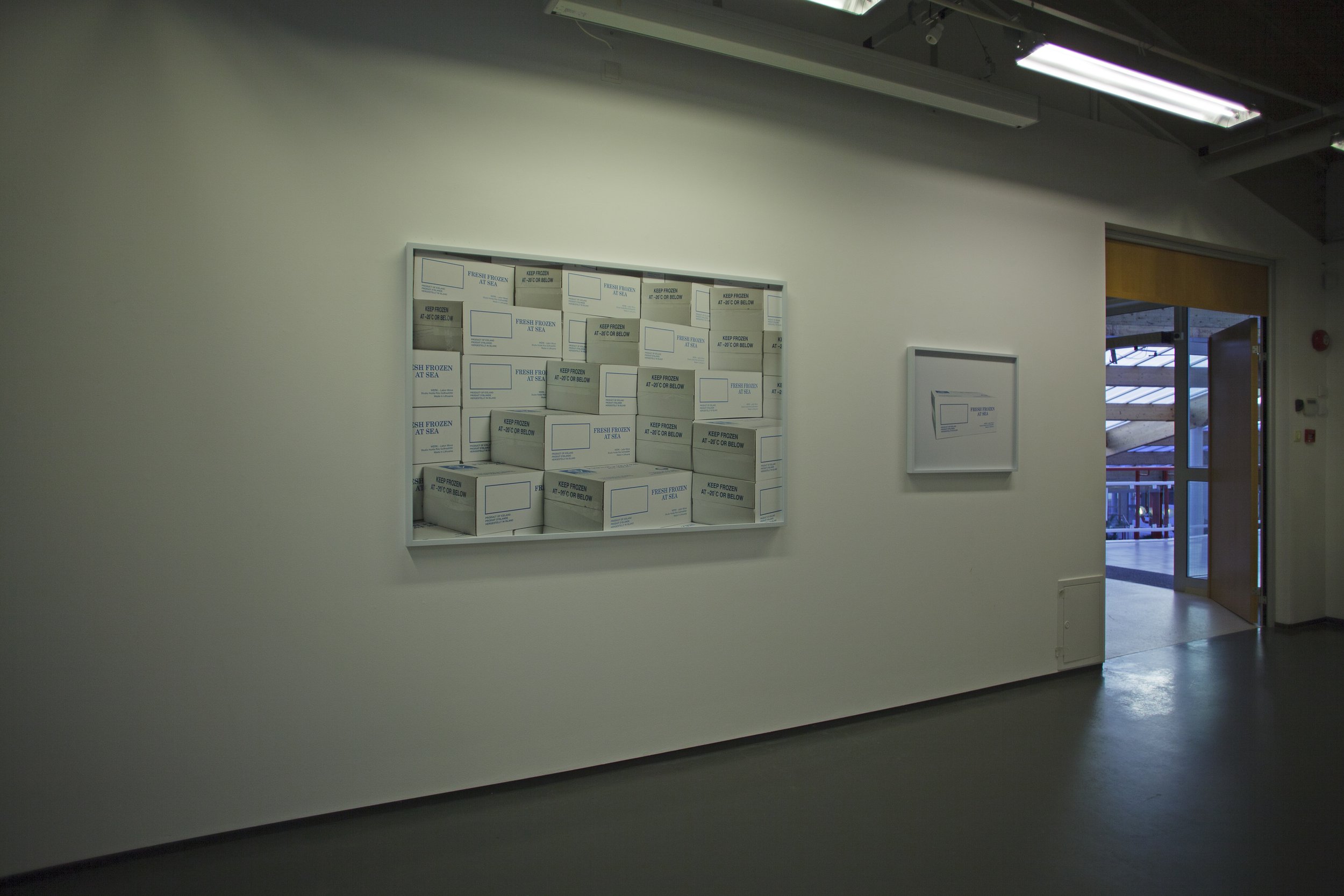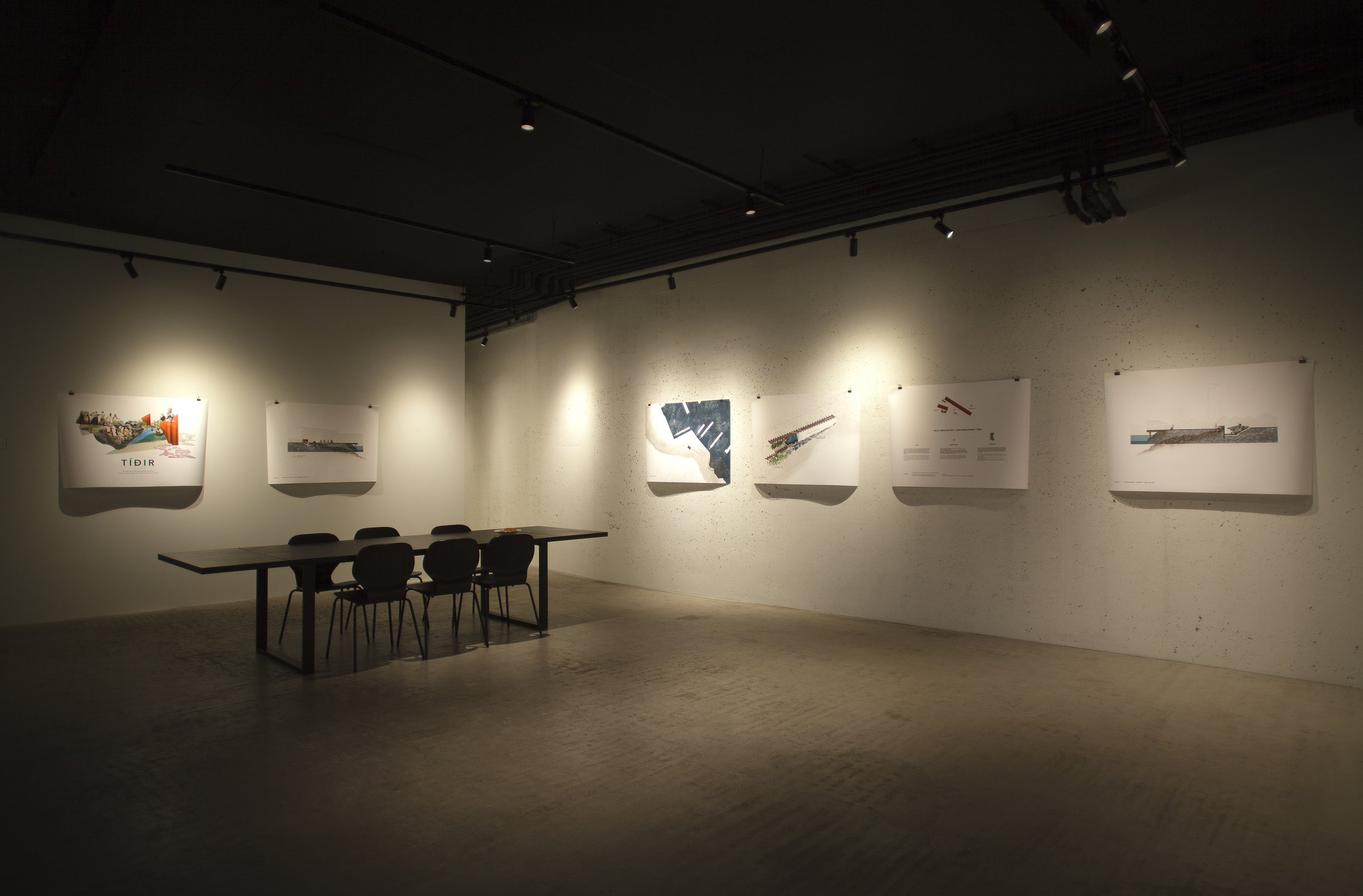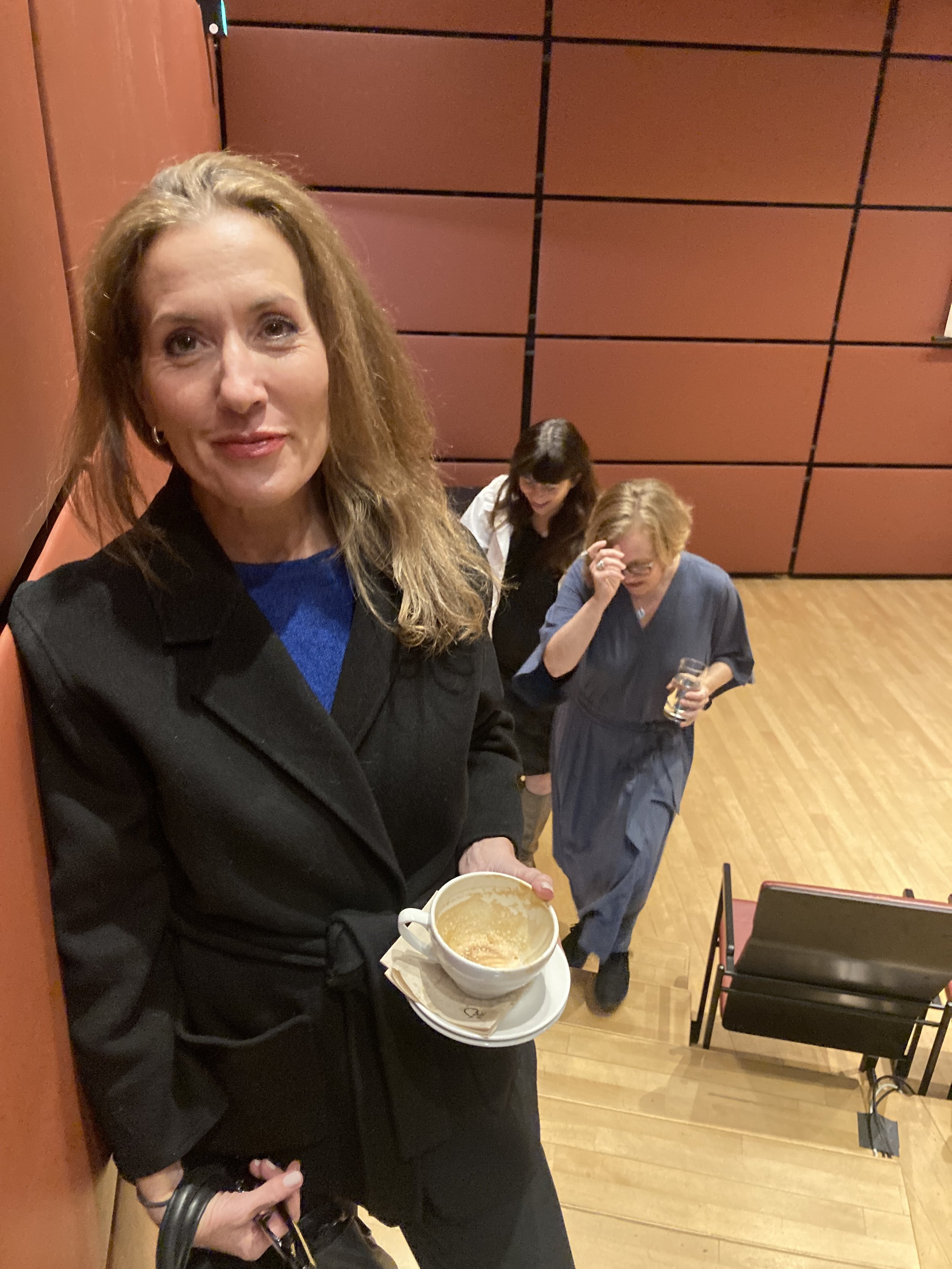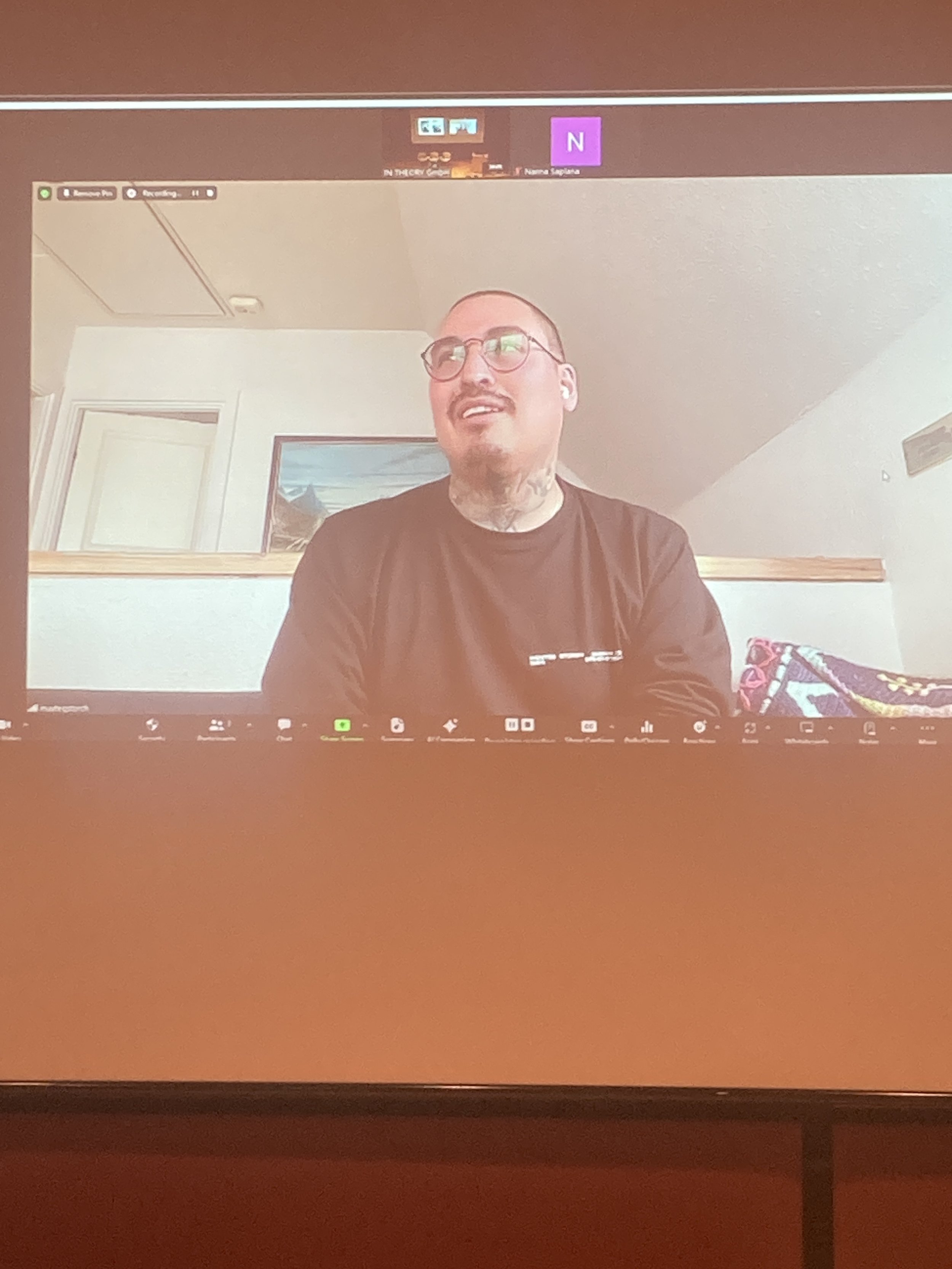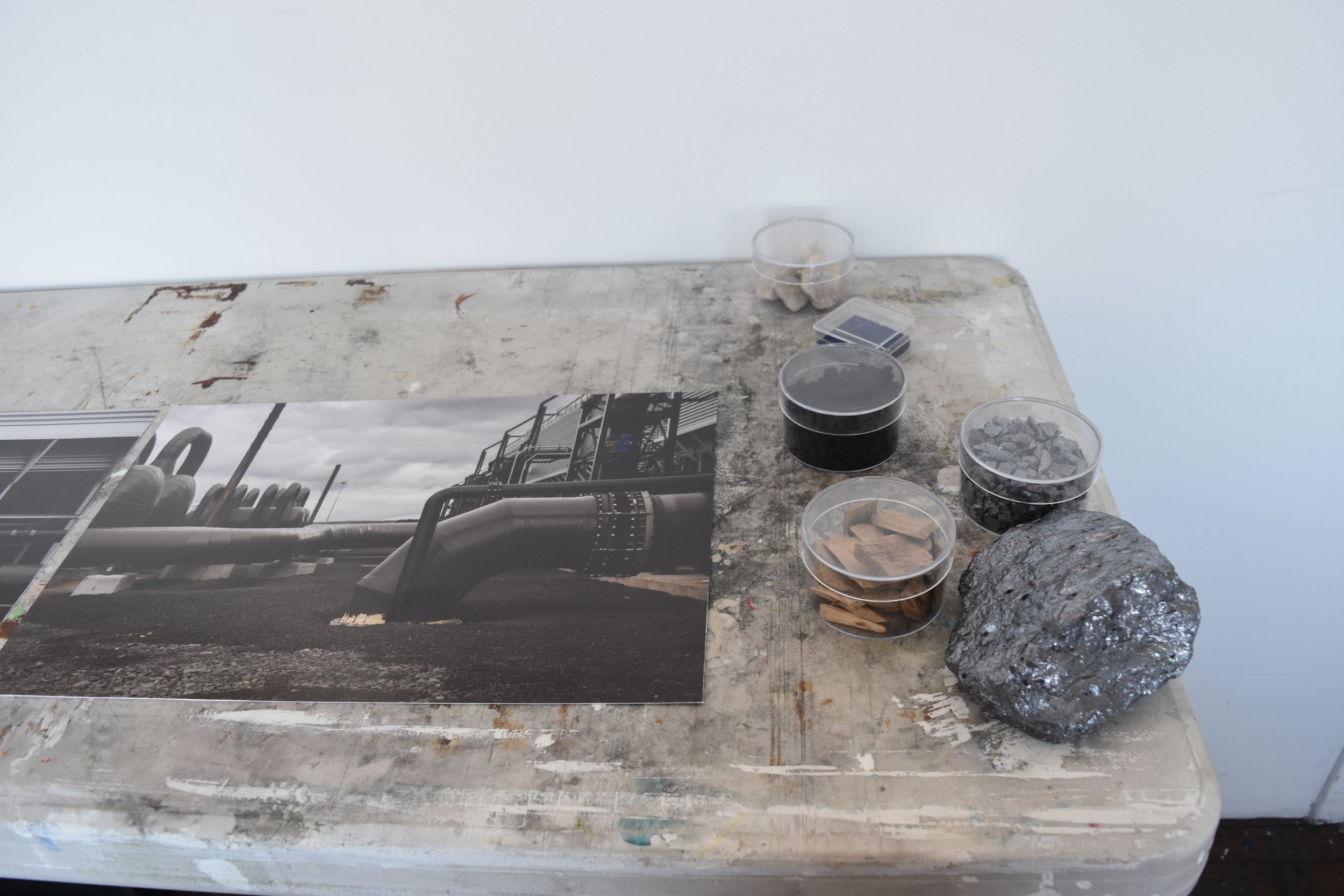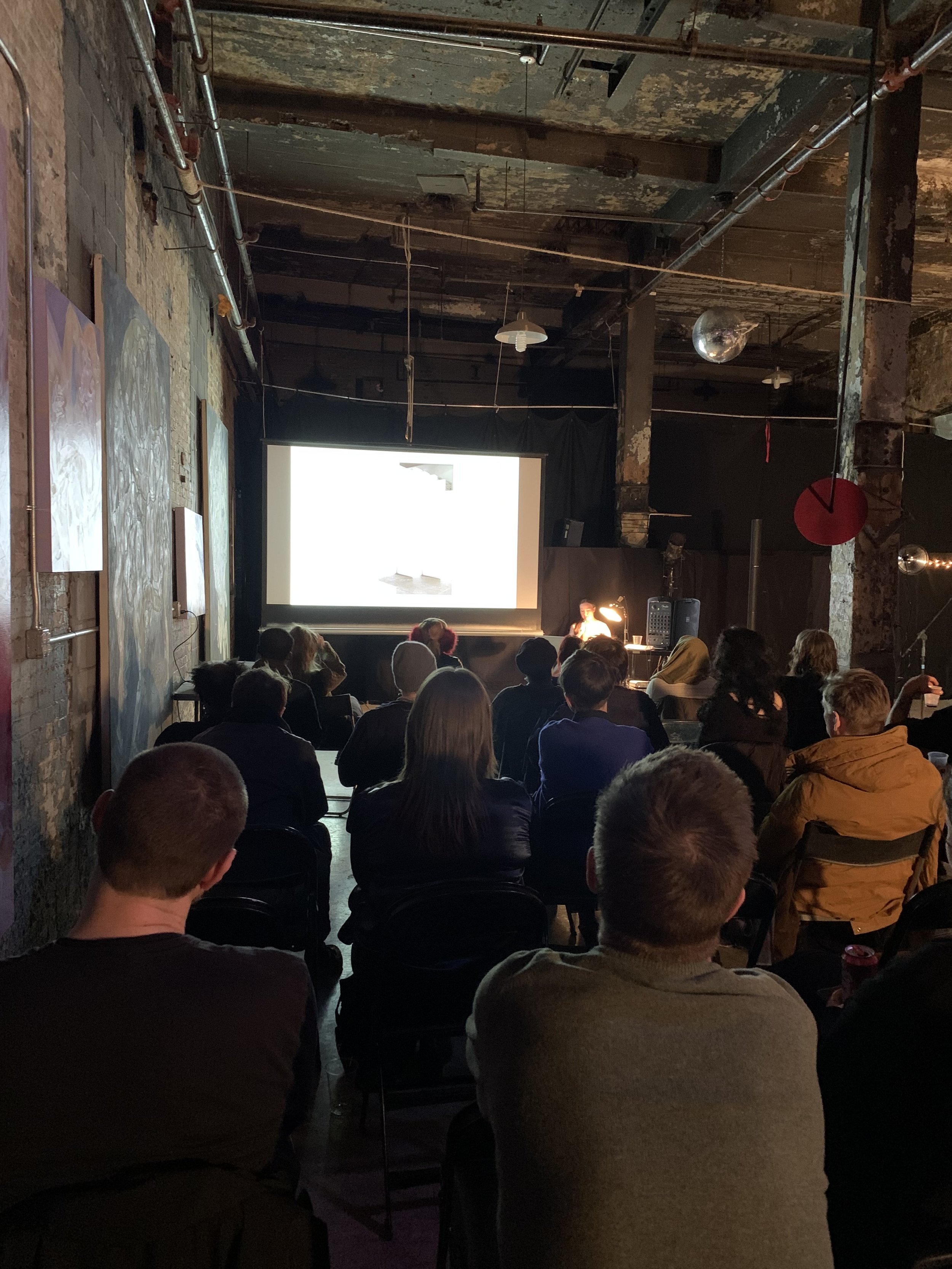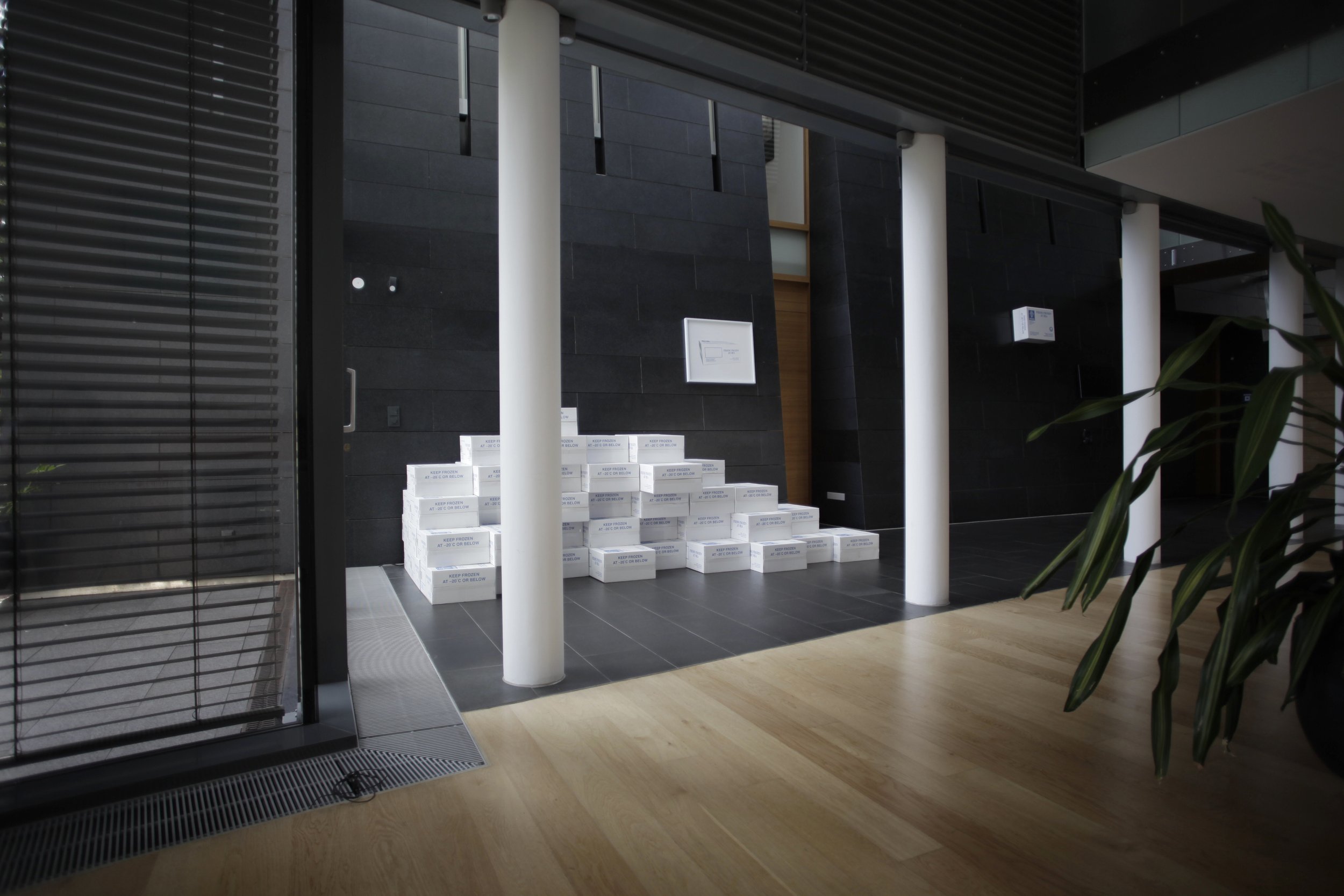Tvö verk úr WERK röðinni til sölu. Ásmundarsalur er til húsa á Freyjugötu 41, 101 Reykjavík.
‘LJÓS [ mynd ] LIST’, solo exhibition
Curated by Becky Forsythe at Gallerí Grótta in Reykjavík, Iceland.
Review by María Margrét Jóhannsdóttir, art critic at Morgunbladid Feuilleton section on the 31st of October 2025 under the headline ‘An Artistic Research on Another and Higher Plane’
Hulda Rós Guðnadóttir celebrates twenty years of artistic practice, and on this occasion she presents the exhibition LIGHT [image] ART at Gallerí Grótta in Seltjarnarnes. Based in Berlin, Hulda Rós has an engaging career behind her. She is educated in fine art and anthropology, has worked in both visual art and filmmaking, and has received numerous awards and recognitions in the field of film. She has also established a distinctive position among Icelandic artists for her research-based artistic practice, which largely revolves around the position of labor in relation to globalization and the transformations that have taken place within Icelandic society in recent decades. Earlier this year, for instance, the Living Art Museum (Nýlistasafnið) showed her work The Puffin Shop (2019), a sculptural installation featuring 2,470 stuffed puffins arranged in IKEA shelving units, referring to the tidal wave of tourism that swept through Icelandic society almost overnight and to how the puffin has become an emblem of those upheavals.
In the exhibition at Gallerí Grótta, the focus is instead on the fishing industry, which has played a major role in Hulda Rós’s artistic research in recent years. This is her first true photography exhibition, presenting two photographic series: WERK from 2021 and S-I-L-I-C-A from 2022 — ten photographs in total. WERK consists of five photographs taken from an installation shown at the Reykjavík Art Museum in 2021, which concluded an extensive research and performance project titled Keep Frozen. The project spanned several port cities and included, among other things, a 48-hour performance in which dockworkers carried 25-kilogram cardboard boxes (the standard weight of frozen fish in such boxes) from one pallet to another — the same duration as it takes to unload a ship’s cargo. Through this durational gesture, the artist drew powerful attention to the strenuous and often invisible labor of dockworkers.
Installation view at Galleri Grotta.
In the exhibition at Gallerí Grótta, the focus is instead on the fishing industry, which has played a major role in Hulda Rós’s artistic research in recent years. This is her first true photography exhibition, presenting two photographic series: WERK from 2021 and S-I-L-I-C-A from 2022 — ten photographs in total. WERK consists of five photographs taken from an installation shown at the Reykjavík Art Museum in 2021, which concluded an extensive research and performance project titled Keep Frozen. The project spanned several port cities and included, among other things, a 48-hour performance in which dockworkers carried 25-kilogram cardboard boxes (the standard weight of frozen fish in such boxes) from one pallet to another — the same duration as it takes to unload a ship’s cargo. Through this durational gesture, the artist drew powerful attention to the strenuous and often invisible labor of dockworkers.
Through the photographic documentation of this project, new autonomous artworks have emerged, which now stand on their own terms. The square white boxes with blue text reading Keep Frozen at –20°C or Below have been stacked according to the artist’s compositional logic, resembling immutable sculptures and forming a striking visual field in which light and shadow generate a strong sense of depth and rhythm.
Installation view. S-I-L-I-C-A.
S-I-L-I-C-A, also a series of five photographs, is of a different nature. It is part of Hulda Rós’s ongoing research focusing on the global supply chain of silicon. A more documentary tone prevails in these works, which resemble field studies where coincidental moments are captured on film — standing in deliberate contrast to the neatly arranged boxes of WERK.
Gallerí Grótta is an interesting choice of venue for an artist of her scope. For those unfamiliar with it, the gallery is a small space adjoining the Seltjarnarnes Library on the upper floor of Eiðistorg, directly above Hagkaup supermarket. The exhibition text explains that this location is no coincidence: “The library and its surroundings are deeply intertwined with the artist’s childhood years in Seltjarnarnes, where she grew up by the sea and immersed herself in books. The exhibition begins in a place where personal roots and artistic research meet,” it states. This connection gives the exhibition an added dimension — the setting becomes part of the whole, resonating meaningfully with the exhibition’s content and binding it together.
The raw architecture of the space further underscores the subject matter of the works. The concrete floors and exposed ventilation pipes echo the industrial imagery of the pieces, especially the photographs depicting factories. This demonstrates how Hulda Rós carefully considers the final presentation, incorporating spatial context and embodied experience into the narrative of her works — much as she did with her installation at the Reykjavík Art Museum’s Hafnarhús, where she evoked the urban transformation of Reykjavík’s harbor area: how former warehouses become art spaces, and how traditional harbor industry gives way to hotels, concert halls, food markets, tech offices, and luxury retail.
Installation view.
Alongside the exhibition, and marking her twenty-year career, the book Rhythm of Labor (Icelandic: Taktur í verki) is being published. It focuses primarily on the long-term artistic research project Keep Frozen, of which WERK forms a part. The project has spanned fifteen years, and the book serves as both reflection and documentation. It is beautifully produced, with much attention given to texts, image presentation, and design. Essays by Elisabeth Brun (artist and filmmaker), Heiða Björk Árnadóttir (art and museum scholar), Anamaría Garzón Mantilla (art theorist and professor), and Katla Kjartansdóttir (PhD candidate in cultural studies) are included, alongside an introduction by the book’s editor Julia Gwendolyn Schneider. The essays are rich in content and offer an insightful overview of Hulda Rós’s research. The structure is clear, chapters well-paced, and the overall presentation highly accessible.
The exhibition is understated and free of affectation. Though modest in appearance, there is a distinct beauty in its simplicity. A deeper look reveals many conceptual threads leading in new directions, and it becomes clear that vast ideas and tireless work lie behind it. Hulda Rós’s approach to the fishing industry is unexpected, engaging, and laden with meaning. Her artistic research belongs among the most thought-provoking in Icelandic contemporary art — not least because it is so refreshing to see a woman artist turning her gaze toward a traditionally “masculine” industry in this way. Hulda Rós is a force to be reckoned with.
Installation view.
Installation view.
Installation view.
TIDES in SIND gallery, Reykjavik
On Monday, 11 November 2025, a pop-up neighborhood introduction to a new public artwork was held at SIND Gallery in the 101-West district of Reykjavík, close to the future installation site. The artwork will activate a former industrial zone in Reykjavík’s midtown harbor, creating a new shared space for local residents. Conceived as a social sculpture and an urban intervention, the work introduces a wild garden and a reflective structure that engages directly with tidal rhythms and the oceanic impacts of climate change.
The artwork emerged as the winning proposal in an open competition held by the Reykjavík Harbor Authority in 2017, commemorating the often overlooked role of women’s labor in the harbor’s 100-year history. Its construction has been postponed to align with broader redevelopment in the area, which has experienced delays for various logistical and planning reasons.
To the right Hildigunnur Sverrisdóttir architect, co-author of Tides
To the right Hulda Rós Guðnadóttir artist, co-author of Tides
‘Twingo’ Group exhibition at WirWir - Berlin June 2025
Photo credit April Gertler
Photo credit April Gertler
Photo credit April Gertler
Photo credit Peggy Sue Amison
Photo credit Peggy Sue Amison
Photo credit Peggy Sue Amison
Installation view. ‘Powered by Nature’ and ‘Pour on the Coal’, both 2025
S-I-L-I-C-A-0-2 - solo exhibition at Gallery Gudmundsdottir in May and June 2025
Curatorial text of gallerist Gudny Gudmundsdottir:
Hulda Rós Gudnadóttir’s exhibition S-I-L-I-C-A-0-2 examines the global manufacturing structure behind silicon—a key component in technologies central to green energy transition such as solar cells as well as consumer electronics and our social infrastructure in general. Through sculptures, photographs, and materials from the production process, Hulda Rós Guðnadóttir traces the material’s journey from extraction to the creation of purer silicon and beyond, revealing the vast network of industries, landscapes, and geopolitical forces that shape its production. The work in the exhibition investigates entanglements of what is labelled green and non-green and the extractive economies that most objects in our everyday life are a part of.
Installation view. SILICA 05, SILICA 01, SILICA 04 2022 and ‘Here Comes the Sun’ 2025
For over a decade, Hulda has researched global trade and the hidden labor behind industrial supply chains. Her long-term project Keep Frozen focused on the shipping industry, revealing the human and environmental impact of maritime logistics. S-I-L-I-C-A-0-2 extends this inquiry, looking at how Iceland, Australia, Colombia, Egypt, Taiwan, and other regions are connected through the silicon supply chain. Iceland, often positioned as a leader in renewable energy, plays a crucial role in the creation of purer silicon using its geothermal resources before it is sent for further processing. As geopolitical tensions over the Arctic intensify—driven by resource extraction, trade routes, and strategic interests—the subject of Iceland’s role within the global system shifts from being of peripheral interest to gaining a major international attention.
Installation view. SILICA 05, SILICA 01, SILICA 04 2022
The exhibition features silicon metalloids alongside images from Hulda’s research archive in Australia and Iceland, documenting the landscapes and infrastructures shaped by silica extraction and processing. The digital photo series Here Comes the Sun juxtaposes a scan of a solar cell with a silicon metalloid, underscoring the raw material origins of renewable energy. A sculptural installation of seven elongated glass pipes, each over two meters long and filled with coal, highlights the continued reliance on fossil fuels within the green technologies sector.
Installation view. SILICA 02 and SILICA 03, 2022
Hulda Rós invites us to examine the complexity embedded in the clean energy transition as well as in the infrastructure of our social systems. What does sustainability mean when it depends on extractive industries spanning multiple continents? How does Arctic geopolitics intersect with resource economies, and what role does Iceland play in this increasingly contested region?
Through her research-driven practice, Hulda Rós Guðnadóttir challenges us to look beyond the surface of materials and industries we take for granted, highlighting the hidden entanglements of energy, economy, and environment.
The Living Art Museum Acquires "Puffin Shop" by Hulda Rós Guðnadóttir
The sculpture installation Puffin Shop (2019) has been acquired by The Living Art Museum (Nýló) in Reykjavík, Iceland—one of the country's most influential artist-run institutions, housed in the iconic Marshallhouse, a central hub for contemporary art.
The work was recently featured in a curated selection of new acquisitions from 2020 onward, organized by the museum’s Collection Director, Jenny Barrett. [Link to curatorial text]. The pictures are from that exhibition.
Puffin Shop is a striking and thought-provoking installation comprising three triangular sculptures constructed from 2,470 puffin plush toys and nine IKEA pine wood shelves. At once playful and unsettling, the work interrogates the commodification of national identity and the layered dynamics of cultural representation.
Originally created for the solo exhibition All is Full of Love (2019) at Künstlerhaus Bethanien in Berlin, Puffin Shop explores contemporary manifestations of crypto-colonialism in Iceland. The installation engages with the country’s explosive tourism boom alongside the less visible but economically dominant fishing industry. By triangulating themes of fish, tourism, and art, Guðnadóttir reveals the deeper mechanisms of gentrification and economic transformation in her home country.
Curated by Jonatan Habib-Engqvist, the original Berlin exhibition framed these tensions within broader geopolitical and aesthetic discourses.
Adding another layer to the work, composer Joseph Marzolla collaborated with the Icelandic Choir in Berlin, led by Haraldur Thrastarson, to create an original soundtrack that accompanies the installation. [Link to more information about Puffin Shop]
[Listen to Joseph Marzolla’s soundtrack here]
Grant recipient Icelandic Visual Arts Fund
Recipients of spring award at the Icelandic Visual Arts Fund for exhibitions in Berlin and Vienna in 2025. Picture courtesy of Icelandic Art Center in March 2025.
SPARK Art Fair Vienna, Austria March 20th - 23rd 2025
Participation at Positions Art Fair, Berlin with Gallery Gudmundsdottir
Gallery Gudmundsdottir, Berlin exhibited Hulda Ros Gudnadottir, Ivy Lee and Kolbeinn Hugi at Positions Art Fair September 2024.
Gallery Gudmundsdottir booth at Positions Art Fair 2024. Photo by Dennis Helm.
Shipyard Paintings (206) and Golden Ship (2016) by Hulda Ros Gudnadottir at Positions Art Fair. Photo by Dennis Helm.
From left to right: Ivy Lee, Gudny Gudmundsdottir and Hulda Ros Gudnadottir. Photo by Dennis Helm.
From left to right: Gudny Gudmundsdottir, Ivy Lee and Hulda Ros Gudnadottir. Photo by Dennis Helm.
Gallery Gudmundsdottir booth at Positions Art Fair 2024. Works by Hulda Ros Gudnadottir, Kolbeinn Hugi and Ivy Lee. Photo by Dennis Helm.
Symposium 'The Great Defrost' at Felleshus Nordic Embassies Berlin
On the 13th of September 2024 a symposium curated by Hulda Ros Gudnadottir with Gallery Gudmundsdottir as an organiser and Wayra Schübel as communication officer, was held as a one day even at the Felleshus in Berlin.
See Gallery Gudmundsdottir website for more detail.
Curator: Hulda Rós Guðnadóttir
Moderator: Julieta Aranda
With keynotes and inputs by: Elisabeth Brun, Katla Kjartansdóttir, Anamaría Garzón Mantilla, Marina Fokidis, Delhia Hannah, Camilla Skovbjerg Paldam, Inuuteq Storch
Funded by the Nordic Culture Fund in collaboration with Gallery Gudmundsdottir.
Publication DISTANZ Verlag
Katla, Julieta and Camilla.
Anamaría and Marina.
Guests and embassy staff in good spirit.
Anamaría and Julieta.
Anamaría with an unusual position.
Anamaría, Julieta and Marina.
Curator, writer, researcher and moderator Cassandra Edlefsen Lasch.
Quite a few people came through on a busy Berlin Art Week.
Kimberly Bradley
Archive images from Sumarlidi Isleifsson PhD research
Katla and Elisabeth.
Moderator in action.
Respondent par excellence.
Artist Clemens Wilhelm from Hilberraum Berlin was in the audience.
Dehlia Hannah responding to Elisabeth Brun’s keynote.
After a busy day of taking in a lot of new perspectives artist Inuuteq Storch invited us into his living room in Sisimiut, Greenland.
Awarded a publishing grant from The Icelandic Visual Art Copyright Association
Photo Daniel Leeb from The Icelandic Visual Art Copyright Association news release
I am honored to announce that I have been awarded a publishing grant from the The Icelandic Visual Art Copyright Association. This grant supports the publication of a monograph by Distanz Verlag in Berlin, focusing on my 'Keep Frozen' art practice as a research project. The publication is a collaboration with Gallery Gudmundsdottir in Berlin and will coincide with a solo exhibition at Spark Art Fair, Vienna in March and at the gallery during Gallery Weekend in Berlin in 2025.
Further information:
Public lecture at Iceland University of the Arts - Department of Fine Arts
5th of April 2024
♪ Yah, working on the edge ♪ [guitar riffs breakout]
In her lecture, Hulda Ros Gudnadottir explores her art-practice-as-research, merging contemporary art and filmmaking that operates beyond academic institutions, blending qualitative anthropology and artistic methods. Hulda will spotlight her method of transitioning between mediums, probing fundamental questions about each medium's qualities, functions, as well as expectations towards it. She will particularly explore the nuanced boundaries between objectivity, documentation, reality, and fiction, in the realm where documentary and contemporary art converge.
Awarded Prestigious Publishing Grant by the Icelandic Arts Council / Icelandic Visual Arts Fund
I am honored to announce that I have been awarded the highest grant, approximately 11,000 Euros, in the spring allocation from the Icelandic Arts Council’s Visual Art Fund. This grant supports the publication of a monograph by Distanz Verlag in Berlin, focusing on my 'Keep Frozen' art practice as a research project. The publication is a collaboration with Gallery Gudmundsdottir in Berlin and will coincide with a solo exhibition at the gallery during Gallery Weekend in Berlin in 2025.
The Icelandic Arts Council is committed to fostering artistic excellence and facilitating artistic dialogue through various initiatives and grants. The publishing grant highlights the organization's dedication to nurturing Icelandic contemporary art talents in the global art community. The Icelandic Art Center is the grant’s facilitator for the Icelandic Arts Council.
Further information:
Picture courtesy of the Icelandic Art Center originally published on the website of the center and shows the recipients spring 2024 that were able attend the ceremony.
Residency at International Studio and Curatorial Program, NYC in 2023 with support from The Icelandic Art Fund and The Icelandic Copyright Association
Pictures taken by ISCP interns Kim Chan and Leslie Read in my atalier @iscp_nyc during the first part of my residency there in February and March 2023. I will return to the residency on the 1st of November 2023
6th of May 2023 Gæp Gallery, Bucharest.
Screening of ‘Ocean Glory’.
Artist talk 'Artist at Work' at International Studio and Curatorial Program, NYC on March 28th 2023
The talk was broadcasted live on ISCP instagram page.
Screening at Anda&Fala
Screeening of Keep Frozen at Anda&Fala - Associação Cultural, Ponta Delgada, Azores islands in March 2023
As part of their partnership with Anda and Fala ‘Temporadas de Vaga’ in the Azores Island Cycle Music and Art Festival curated a screening of Keep Frozen at the cultural center located in Ponta Delgada in March 2023.
Artist Talk at 'Mothership' saloon at Last Frontier in New York City, March 2023
The saloon was co-produced by NOoSPHERE Arts and supported by the Icelandic Consulate in New York City.
The Ghostnet and the Buyo at Great Patch group exhibition in Kraków
GREAT PATCH 28.10-01.12 2022 at UFO gallery, Kraków, Poland.
Installation view of the exhibition. In the forefront is a wall drawing as result of the Buyo reflection and The Ghostnet. The Buyo was shown as a kinetic hanging sculpture rotating in circles throwing a room sized animation on the walls. In the next room one can see ‘Broad Daylight All Night’ by Magdalena Lazar. Photo by Szymon Sokołowski.
ARTISTS: Hulda Rós Gudnadóttir, Sabina Kaluza, Magdalena Lazar, Karolina Melnicka, Michal Smandek, Anna Sztwiertnia and Linda Poninska.
Curated by Weronika Ptak.
Installation view of the exhibition. To the left in the inner room one can see The Buyo. In the main room ‘Satan Petit-Cœur 2.0’ by Karolina Mełnicka. Photo by Szymon Sokołowski.
Installation view of the exhibition. In the forefront is The Buyo with a wall reflection and The Ghostnet. Photo by Szymon Sokołowski.
Installation view of the exhibition. In the forefront is a wall drawing as result of the Buyo reflection and The Ghostnet. The Buyo was shown as a kinetic hanging sculpture rotating in circles throwing a room sized animation on the walls. Photo by Szymon Sokołowski.
WERK at the Residence of the Icelandic Ambassador to Berlin summer 2022
Collaboration with Gallery Gudmundsdottir, Berlin


